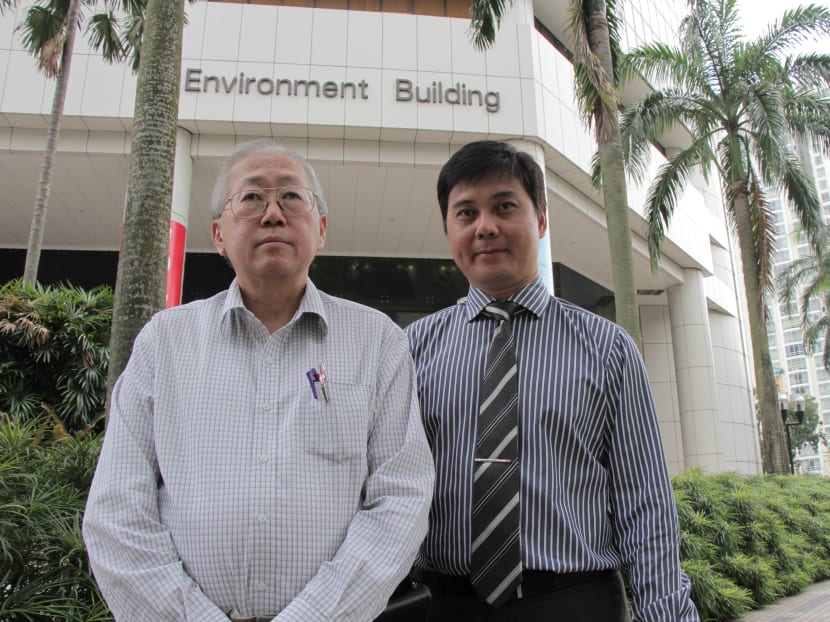Building efficiency and the role of air conditioning
SINGAPORE — Buildings are insidious energy guzzlers: 40 per cent of energy consumption is attributed to buildings. And with air conditioning alone taking up 60 per cent of the electricity consumed in a typical Singapore building, lots more can be done about it.

Mr Lee Eng Lock (left) and Mr Cheng Sin Yew of Trane in front of the Environment Building, which their company helped retrofit. Photo: Zara Zhuang
SINGAPORE — Buildings are insidious energy guzzlers: 40 per cent of energy consumption is attributed to buildings. And with air conditioning alone taking up 60 per cent of the electricity consumed in a typical Singapore building, lots more can be done about it.
“Creating a good air-conditioning system is not just about having efficient equipment; it’s also about designing the system to suit the characteristics of buildings,” said Mr Cheng Sin Yew, Country Manager at Trane, the company that provided the chiller systems used in Gardens by the Bay and in about 70 per cent of the buildings along the Orchard Road belt.
Air conditioning is relevant to the move towards green or energy-efficient buildings, especially in Singapore. The green-building market in Singapore will grow between 33 and 68 per cent from 2012 to 2015, according to the SmartMarket Report on World Green Building Trends released this February by McGraw-Hill Construction, and the accompanying demand for green energy systems is rising. “Over the past ten years, we’ve seen the (air-conditioning) industry go from push to pull — suppliers used to have to push high-efficiency machines to building owners, but now building owners are demanding these machines,” said Mr Cheng.
On what can be done to make more Singapore buildings energy efficient, Mr Lee Eng Lock, Technical Director at Trane, said: “The question should, instead, be this: What stops Singapore from having highly energy efficient buildings everywhere?”
According to Mr Lee, one reason the air-conditioning, building and construction industries cannot make rapid progress in energy efficiency is that they are highly fragmented. “There are many players — architects, quantity surveyors, civil and structural (engineers), interior designers — and they each have contacts that they prefer to work with,” he said. “Everyone has a reason for claiming his (product) is the best, even if it isn’t, and there are no measurements to disprove such claims.”
The problem of split incentives also stands in the way of making buildings energy efficient. “The incentive is to do something good for yourself,” said Mr Lee. “(Some may not think it) worthwhile to upgrade the air-conditioning system of a building if they will soon cease to be the tenant or if they intend to sell the building anyway.”
The shortage of verifiable data on energy efficiency makes the process of going green difficult. Mr Lee said: “In the air-conditioning industry, there was no method of measuring how much cooling is produced for the amount of electric power put in. This is why government agencies started talking about measurement and verification.” Through the Energy Conservation Act implemented this April 22, Singapore is the first country in the world to try to enforce strict standards on measurement and verification of the energy efficiency of air-conditioning systems, added Mr Lee.
Energy-efficient air-conditioning systems need not come at the cost of finances. “Some believe there is a trade-off between economical gain and energy efficiency, but I really don’t think so,” said Mr Cheng. “If you look at the life-cycle cost for a building operating a chiller-plant air-conditioning system, the initial cost of installing the equipment is the tip of the iceberg, but if you manage to cut 5 to 10 per cent from the operating cost, that makes a huge difference.”
Mr Cheng continued: “We can incentivise building owners to adopt more energy-saving measures by providing grants and financing schemes, encourage technological innovation to bring about more energy-saving solutions and better monitoring systems, and nurture talented green professionals.”





